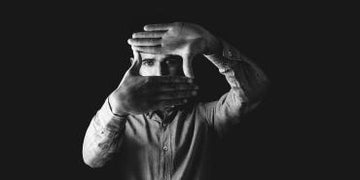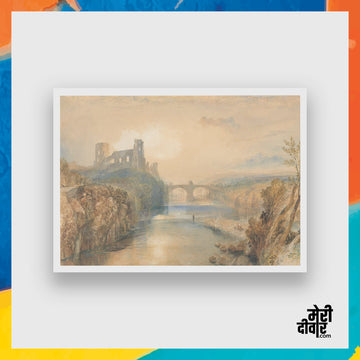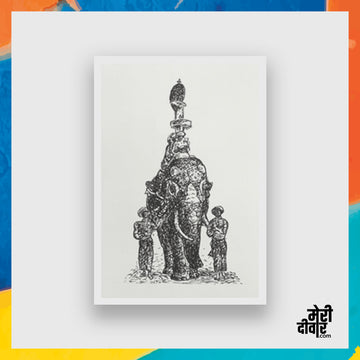It’s a photographer’s dream to display his/her photographs to the world, get appreciated and even get them sold. At an exhibition, the photographer can reach out to viewers and interact with them. The photography exhibition is a key step for a photographer towards establishing oneself as a professional. The photography exhibition is a very important event for a photographer as it not only gives the photographer the fame but can even be a source of earnings.
But having an exhibition may turn out to be a task for some, majorly while the execution part of it is concerned.

Here is a simple 4 step guide for all the photographers out there!
Step 1 Pre-production Preparation
First and foremost, you need to select a place where you want to exhibit your photographs. You may book an art gallery for this. If you want to go offbeat, you can also book a hotel or a cafe where you can set up your exhibition.

However, if you want to book an art gallery, you must make sure you book it at least 3 - 4 months prior. Once you have selected a place, you need to take the measurements of the walls of the space you have selected in order to determine the print size of your photos.
Now that you have captured the best of the moments and pictures, you need to make them look as good as they look to the eye.
Here are some points which you should take care of while your editing is concerned.
a. Size:
First things first. You need to make sure that you select the perfect size for your photo. For this, you should first know what size your photo is. You can check the size of photo easily in Photoshop by following the below-given process.
Open your raw file in photoshop
Select the image option
Go to the size option

Select the suitable size for your photo according to the layout.

b. Colour profile:
Being a photographer, you must be aware of the various colour profiles. Most of the photos are in sRGB profile or in Adobe RGB (1998) profile.
Now your concern is to check the colour profile your photograph has.
Adobe RGB is equipped with a wider colour gamut which enables you to access more shades and colour for your photo.You can select the profile which suits your photo the best.

Tip: Keep your photo in the same colour profile in which it has been captured in the camera until the printing process.




c. Resolution check:
For your photographs to look great, you should make sure that they are in a perfect resolution, as per the requirement.
You can easily check and change the resolution by :
- Go to the Image icon on your app
- Click on the image size
- Check the Image resolution. It must be in 240dpi or 300dpi.
Tip: Always use Raw files to reset or change the resolution of your photos.
d. Software compatibility:
There are various different software which is used to edit the photographs. Every person uses his / her convenient software to edit photos. It may be Photoshop, Capture one, On One, Lightroom or any other. You need to check the software compatibility for your photos to get them printed in a hassle free way. For instance, your photos are edited on Capture one, but they might not get supported by other software. Make sure that your pictures are compatible with other software as well.
e. Colour Calibration:
The aim of colour calibration is to measure and/or adjust the colour response of a device (input or output) to a known state. In International Colour Consortium, this is the basis for an additional colour characterization of the device and later profiling. calibration refers sometimes to establish a known relationship to a standard colour space in one go. The device that is to be calibrated is known as a calibration source; the colour space that serves as a standard is known as a calibration target.
It may not be feasible for every photographer to have a calibration device to check the perfect colour. A hack to this can be that you can simply save a photo in 4 different colour settings and get it printed to select the best print for you.
f. Selecting a Paper for your prints:
Selection of the right quality paper is the most important part as far as a quality print is concerned. After all, you want to make your pictures look as good as real! There is a wide variety of papers for you to choose from.

You can always go for the best quality papers available in the market, like Hahnemühle or Canson. In this too you have a super wide type of papers such as cotton rag papers, matte papers and many more.
Step 2 - Promotions
Once you are done with the preproduction process, you are ready to roll.
For promoting your exhibition you need to know your target customers and audience. Once you have determined the target market for your exhibition, all you need to do is pass on a word on every media possible.

You can use social media at its best for promoting your exhibition. You can make creative flyers and content to attract your audience.
You may as well post on various websites which are linked to photographers and other related fields. You may also send your invitation via mail to contact@merideewar.com to expand your reach.
Step 3 - Execution
Firstly, you need to take all the necessary measurements of the walls of the place you've selected.
Prepare a layout for display of your work. You may use various means to do so. You can either hang them, or use ropes to give it a different look. If you don't want to hang the photographs up on the walls, you may as well use easel stands to display the photos.

The pictures which you choose to exhibit must be in a form of a theme which connects them to create a narrative. Let your best work be in this exhibit. Also, make sure to keep enough space between two pictures to allow the audience to focus on each picture. The displayed pictures must be on the natural eye level of your audience. The best viewing angle is 45 degrees.
For further details on how to make a perfect gallery wall, read our upcoming blog.
Step 4 - Post-production Preparation
Once you have executed the exhibition and your work is sold, you need to make sure it reaches to the end customers safely and without getting tampered
For this, you need to take care that your frames have been packed neatly with a bubble wrap inside a corrugated box.
In case of shipping photo prints, you need to roll them up and put them in toughened cardboard rolls to keep them intact.






